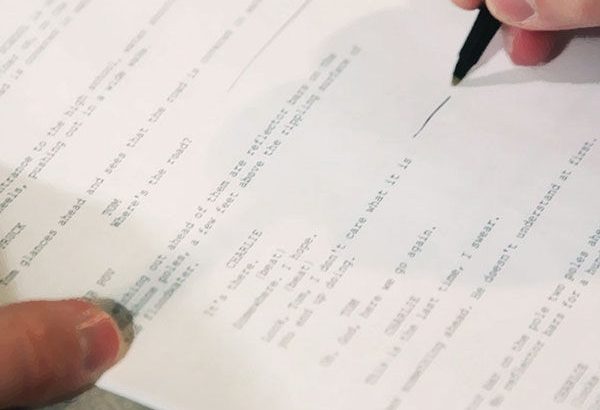There are a few things to keep in mind when writing a postscript. First, make sure that everything you need to say is included in the body of your email, as the postscript is a separate section at the end of the email. Second, keep your postscript concise and to the point – you don’t want to ramble on and on. Finally, make sure that your postscript is legible and easy to read.
To write a postscript, start by typing “PS” at the bottom of your email. Then, type out your postscript in a separate paragraph. Be sure to include all of the relevant information, and keep your language concise and easy to read. When you’re finished, type “End PS” to conclude your postscript.
What should be included in a post script?
A postscript (often abbreviated as “ps”) is a brief, after-the-fact message that is appended to a letter, email, or other piece of correspondence. It is typically used to provide additional information or clarification, or to express gratitude for the recipient’s time and effort.
In most cases, a postscript should be limited to a few sentences or a brief paragraph. It should be concise and to the point, and should not duplicate information that is already included in the body of the letter.
Some key things to keep in mind when writing a postscript:
– Thank the recipient for their time and effort.
– State clearly what you would like the recipient to do (e.g., “Please let me know if you have any questions”).
– Provide any additional contact information that the recipient may need.
– Thank the recipient again.
How long should a post script be?
A postscript (or “PS”) is a short piece of text that is appended to the end of a letter or document. It is typically used to provide additional information or to clarify a point that was made earlier in the document.
How long should a postscript be? There is no definitive answer, but it is generally recommended to keep it brief. A postscript should not be used to introduce new information or to rehash material that was already covered in the document. It should be limited to a few sentences or a paragraph at most.
If you are unsure whether or not you need a postscript, it is best to err on the side of caution and leave it out. Remember that a postscript can always be added later if necessary.
How do you write a post script in an email?
A postscript (P.S.) is a message that is appended to the end of an email. It is often used to provide additional information or to clarify something that was said in the email.
To write a P.S., type “P.S.” at the beginning of the message, followed by your message. You can also use a different font or color to make your P.S. stand out.
Here’s an example:
P.S. I hope you have a great day!
How do you write a postscript?
Postscript (PS) is a computer printing language that enables you to create sophisticated page layouts and graphics. It is most commonly used to create PDF files.
To create a postscript file, you first need to create a document in a word processing program, such as Microsoft Word or Adobe InDesign. Once your document is complete, you need to save it as a PDF file. In order to save your document as a PDF, you need to select “File” and then “Save As.” From there, you need to select “PDF” from the “Save as type” drop-down menu.
Once your document is saved as a PDF, you can open it in a program like Adobe Acrobat or Adobe Reader. From there, you can select “File” and then “Print.” In the “Print” dialog box, you need to select “Postscript” from the “Printer” drop-down menu. Once you have done that, click “Print.”
Your postscript file will then open in a program like Adobe Acrobat or Adobe Reader. From there, you can edit the file as needed.
What is a postscript in an essay?
A postscript is an afterthought, often used to add clarification or further explanation to an essay. It can be a sentence or two, or even a paragraph, and is typically placed at the end of the essay. A postscript can also be used to introduce a new topic that wasn’t covered in the essay.
What should be included in a postscript?
A postscript (PS) is an automatic script that is executed after the main body of a program. It is often used to provide additional instructions or to clean up after the program.
There are several things that should be included in a postscript:
-Clean up any temporary files that were created during the execution of the program.
-Release any resources that were used during the program’s execution.
-Thank the user for their cooperation.
How do you write a post script?
How do you write a post script?
A post script, or “P.S.”, is a short message that is appended to the end of a letter or other document. It is often used to provide additional information or to make a final request or request for forgiveness.
When writing a post script, it is important to keep it brief and to the point. Make sure to include any important information that the reader should know, and be sure to thank the reader for their time.
Here is an example of a post script:
P.S. I hope you enjoy the book. Thank you for your time.
What is post script in a letter?
Postscript (abbreviated P.S.) is a handwritten note that is appended to the end of a letter. It is often used to express additional thoughts or to provide clarification to the main body of the letter. Postscript can also be used to ask for a response from the recipient.
Postscript is typically written in a smaller font than the body of the letter. It is preceded by the phrase “P.S.” or “Postscript”.
Here is an example of postscript:
P.S. I hope you can come to the party on Saturday. It would be great to see you there!
How to write a post script?
A postscript (P.S.) is a statement appended to the end of a letter. It is a message that the writer wants to communicate to the reader after the letter is finished.
There are a few things to keep in mind when writing a postscript:
1. Keep it brief
2. Make it relevant
3. Make it interesting
4. Make it meaningful
5. Make it personal
6. Make it positive
7. Make it memorable
Here are a few tips for writing a postscript:
1. Keep it brief. A postscript should be no more than a sentence or two in length.
2. Make it relevant. Make sure that the postscript is relevant to the letter and to the reader.
3. Make it interesting. A postscript should be interesting and engaging, so that the reader will want to read it.
4. Make it meaningful. Make sure that the postscript has some meaning and purpose.
5. Make it personal. Make sure that the postscript is personal and relevant to the reader.
6.
Make it positive. A postscript should be positive and upbeat.
7. Make it memorable. Make sure that the postscript is memorable and leaves a lasting impression on the reader.
How do you use PS correctly?
In order to use Photoshop correctly, there are a few basic things you need to know. First, you need to understand the basic tools and how to use them. Then, you need to understand how to use layers to create and edit images. Finally, you need to understand how to save and export your images.
The basic tools in Photoshop are the pen tool, the brush tool, the eraser tool, and the selection tool. The pen tool is used to create custom shapes, the brush tool is used to paint on images, the eraser tool is used to erase pixels, and the selection tool is used to select areas of an image.
To use layers in Photoshop, you first need to understand the difference between a layer and a pixel. A pixel is the smallest unit of color that can be displayed on a screen. A layer is a collection of pixels that can be edited independently of other layers. Layers are used to create and edit images.
To save an image in Photoshop, you need to save it as a .psd file. To export an image, you need to save it as a .jpg, .png, or .gif file.
Do people still say PS?
Do people still say PS?
That’s a question that has been asked for years, and the answer is still a little unclear. Some people say that PS is no longer used, while others claim that it is still used in some contexts. So, what is the truth?
To answer this question, it’s important to first understand what PS actually is. PS is an abbreviation for “postscript,” which is a term used in writing to indicate that there is more to say after the main text has been completed. It is often used when a writer wants to add a brief comment or clarification to the main text.
So, does PS still exist? The answer to this question depends on your location and your personal preference. In the United States, PS is not as commonly used as it once was, but it is still occasionally used in formal writing contexts. In other countries, such as the United Kingdom, PS is still commonly used in both formal and informal contexts.
If you’re not sure whether or not to use PS in your own writing, it’s best to err on the side of caution and leave it out. PS can be seen as a bit old-fashioned and formal, so it’s not always necessary in modern writing. However, if you’re writing for a more formal audience, PS may be appropriate.
Can you say PS in an email?
When you’re emailing a potential or current client, is it proper to put PS at the end of the email? What does PS stand for, and what is its purpose?
PS is an abbreviation for the Latin phrase “postscriptum,” which means “written after.” PS is used in business emails as a way to add a brief note after the body of the email. This note can be used to clarify something that was said in the email, or to provide additional information that the recipient may find helpful.
Since PS is a brief note, it’s important to make sure that all pertinent information is included in the body of the email. The PS should not be used to introduce new topics or to provide long-winded explanations.
When you’re emailing a client, it’s always important to err on the side of formality. So, it’s generally best to use PS sparingly, and only when there’s something important that you need to say that didn’t fit in the body of the email.
If you’re not sure whether or not to use PS in an email, it’s always best to err on the side of caution and leave it out.
What does PS in email mean?
PS in email stands for “postscript”. In the context of email, it typically refers to a note or message that is appended to the end of an email message. PS can be used to provide additional information or clarification to the email message, or to ask a question of the recipient. It can also be used to provide a link to a related website or document.


